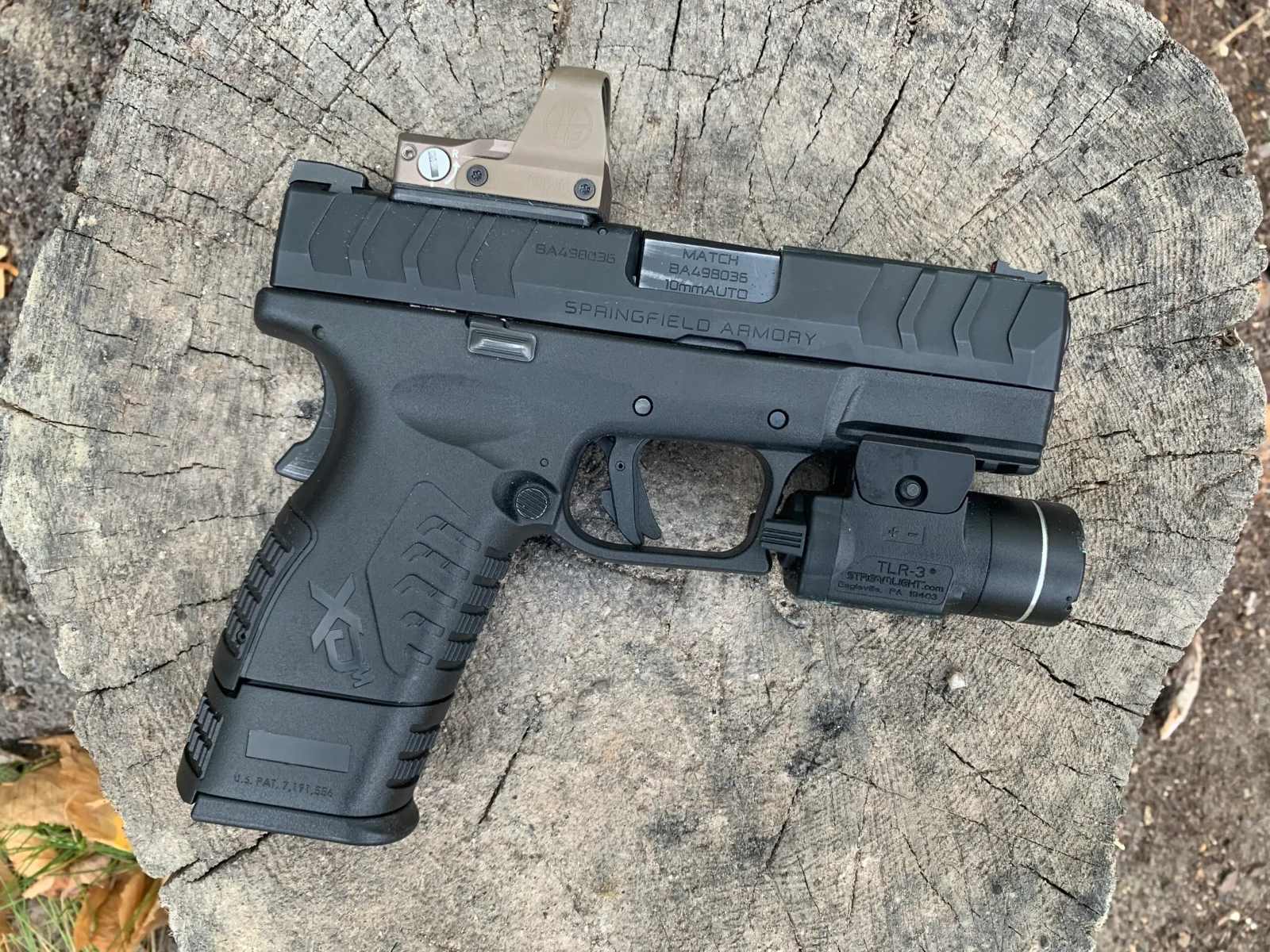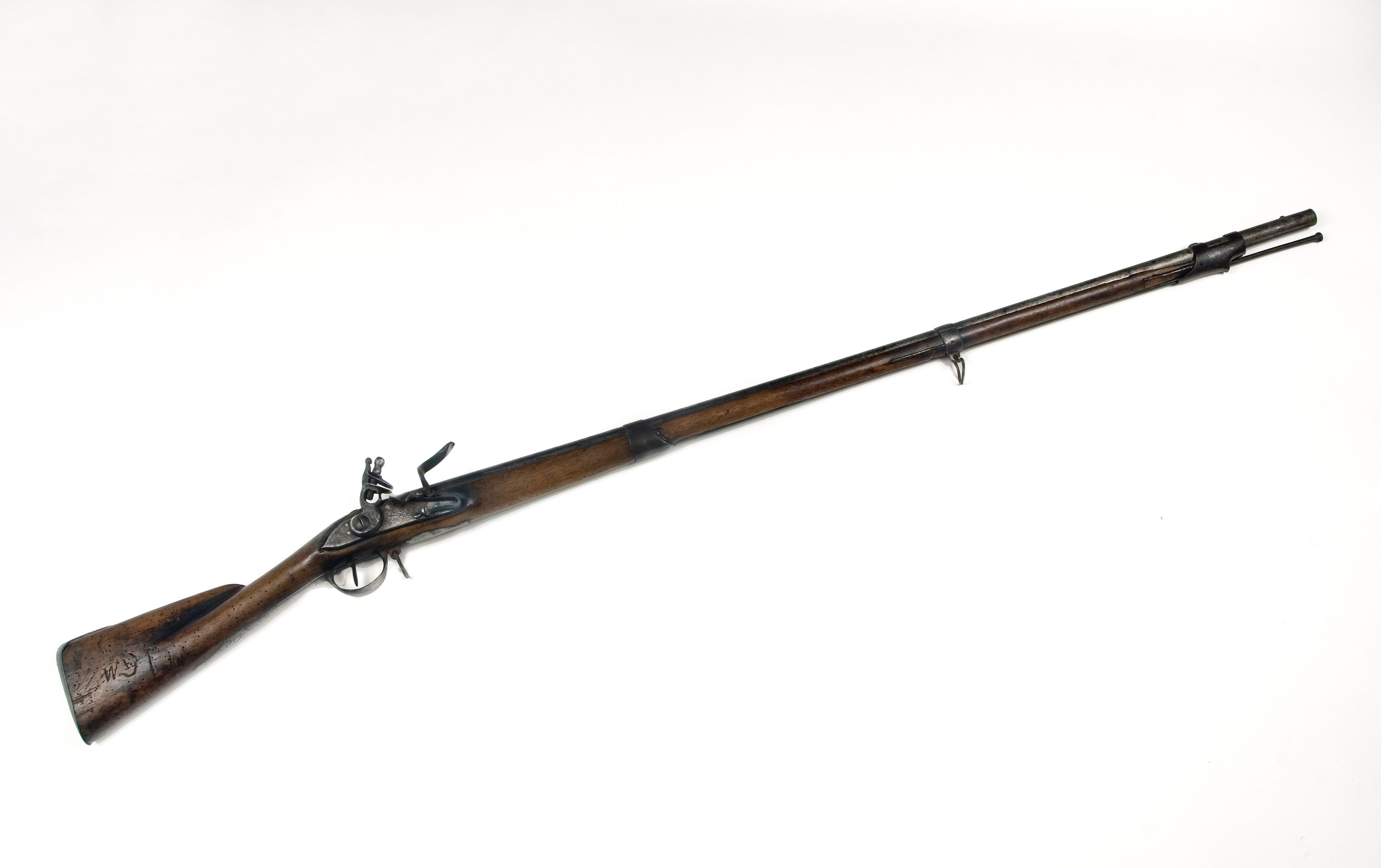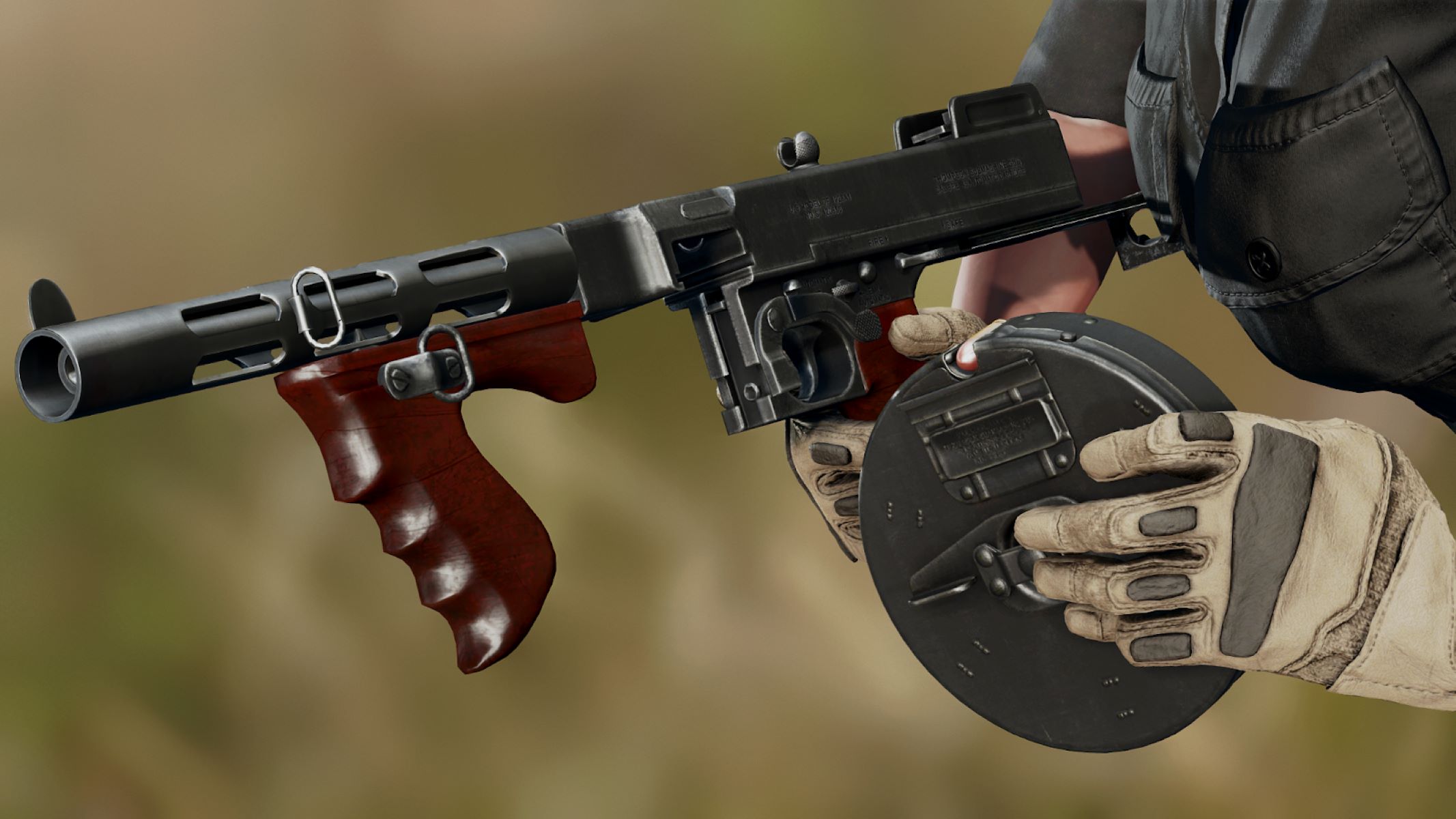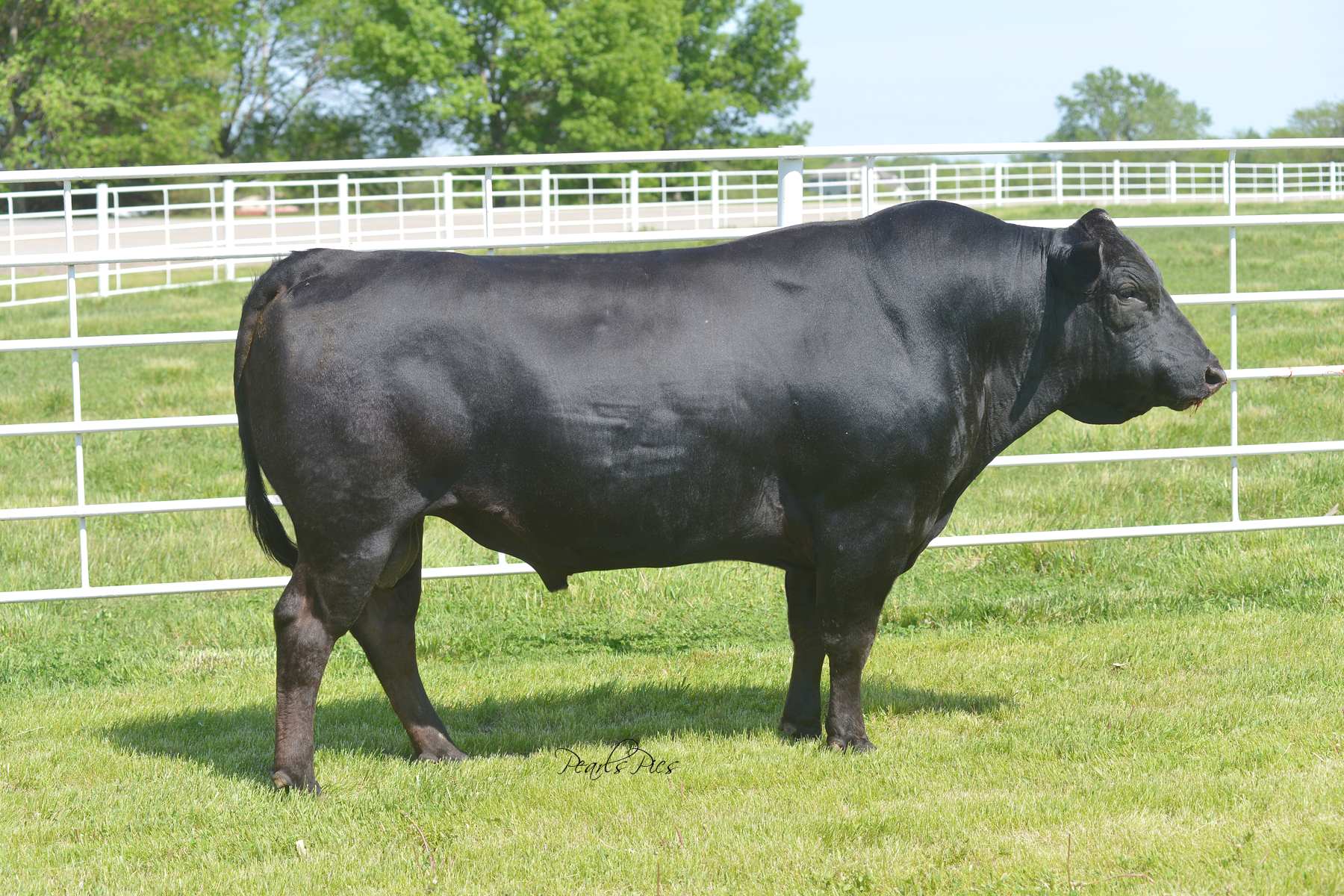Home>History>The Most Deadly Native American Weapon Before Firearms!


History
The Most Deadly Native American Weapon Before Firearms!
Published: February 9, 2024
Discover the fascinating history of the deadliest Native American weapon before the introduction of firearms. Learn about its impact and significance in warfare and culture. Unlock the secrets of this ancient tool!
(Many of the links in this article redirect to a specific reviewed product. Your purchase of these products through affiliate links helps to generate commission for Regretless.com, at no extra cost. Learn more)
Table of Contents
Introduction
The history of warfare is replete with ingenious inventions that have shaped the course of battles and civilizations. Among these, the Atlatl stands out as a remarkable weapon that played a pivotal role in the pre-Columbian era of Native American history. Before the advent of firearms, the Atlatl reigned as one of the deadliest and most effective projectile weapons utilized by indigenous peoples across the Americas. Its significance in warfare, hunting, and cultural practices underscores its enduring legacy as a symbol of ancient ingenuity and tactical prowess.
The Atlatl, also known as a spear-thrower, represented a groundbreaking advancement in the realm of projectile weaponry. Its design and functionality revolutionized the capabilities of hunters and warriors, enabling them to launch projectiles with unprecedented speed and force. This formidable weapon, with its roots deeply embedded in the annals of human history, serves as a testament to the resourcefulness and adaptability of ancient civilizations in harnessing the natural world to meet their needs.
As we delve into the intricacies of the Atlatl, we will uncover the mechanics behind its lethal efficiency, the cultural significance it held within Native American societies, and the enduring impact it left on the historical narrative of warfare and hunting. Through this exploration, we will gain a deeper appreciation for the innovative spirit of ancient peoples and the profound influence of their technological advancements on the course of human history.
The Atlatl: A Deadly Weapon
The Atlatl, a formidable projectile weapon wielded by Native American warriors and hunters, represented a deadly force to be reckoned with in the pre-Columbian era. Its design and functionality endowed it with unparalleled lethality, making it a fearsome implement on the battlefield and in the hunt. Crafted from a variety of materials such as wood, bone, and antler, the Atlatl was a testament to the resourcefulness and ingenuity of indigenous peoples in utilizing natural resources to fashion highly effective tools of war and sustenance.
At the core of the Atlatl's potency lay its ability to dramatically amplify the velocity and range of propelled projectiles, such as darts and spears. By harnessing the mechanical advantage provided by the Atlatl's lever-like design, users could propel projectiles with remarkable force, enabling them to strike targets with deadly precision over considerable distances. This enhanced striking power endowed the Atlatl with a lethal edge, allowing its wielders to engage adversaries and prey from a position of strategic advantage.
The deadly effectiveness of the Atlatl was further underscored by its versatility in combat and hunting scenarios. Whether deployed in large-scale conflicts or utilized for securing sustenance through hunting, the Atlatl stood as a versatile and deadly weapon in the hands of skilled practitioners. Its capacity to dispatch projectiles with lethal force rendered it a formidable asset in the hands of warriors and hunters alike, shaping the dynamics of conflict and subsistence in the ancient Americas.
In the annals of warfare and hunting, the Atlatl emerged as a game-changing innovation that revolutionized the capabilities of its wielders. Its status as a deadly weapon of choice among Native American societies reflects the profound impact it exerted on the outcomes of battles and the procurement of vital resources. The legacy of the Atlatl as a deadly weapon endures as a testament to the strategic acumen and technical prowess of ancient civilizations, leaving an indelible mark on the historical tapestry of human conflict and survival.
The Atlatl's position as a deadly weapon of unparalleled efficacy serves as a testament to the enduring legacy of ancient ingenuity and tactical prowess, shaping the course of battles and civilizations across the Americas. Its impact on warfare and hunting reverberates through the annals of history, underscoring its significance as a symbol of ancient innovation and lethal capability.
How the Atlatl Worked
The Atlatl, a remarkable innovation in projectile weaponry, operated on a simple yet ingenious principle that harnessed mechanical advantage to propel projectiles with enhanced force and velocity. At its core, the Atlatl comprised a slender shaft typically crafted from wood, bone, or antler, featuring a hook or spur at one end to secure the projectile, such as a dart or spear. Wielded by skilled practitioners, the Atlatl leveraged the fundamental principles of leverage and acceleration to unleash devastatingly swift and forceful strikes upon targets.
The mechanics of the Atlatl's operation were centered on the utilization of leverage to amplify the throwing arm's power and speed. When preparing to launch a projectile, the user would secure the dart or spear onto the Atlatl's hook, effectively extending the throwing arm's length and providing a fulcrum for increased leverage. As the user initiated the throwing motion, the Atlatl's design facilitated the transfer of energy from the user's arm to the projectile, enabling it to achieve significantly higher speeds and travel greater distances than if thrown by hand alone.
The utilization of the Atlatl's lever-like design conferred a mechanical advantage that dramatically augmented the kinetic energy imparted to the projectile. This enhanced energy transfer resulted in the rapid acceleration of the projectile, propelling it towards the target with lethal force and precision. The Atlatl's capacity to amplify the throwing arm's power enabled skilled users to attain exceptional velocities, making it a formidable weapon for engaging adversaries in combat or securing game during hunts.
Furthermore, the Atlatl's functionality was complemented by the carefully balanced design of the projectiles it launched. Darts and spears crafted for use with the Atlatl were meticulously fashioned to optimize aerodynamics and stability during flight, maximizing their effectiveness when propelled by the weapon. This synergy between the Atlatl and its specialized projectiles further enhanced the weapon's lethality, ensuring that each launch delivered devastating impact and penetration upon reaching its intended target.
In essence, the Atlatl's operation harnessed the principles of leverage, acceleration, and projectile design to yield a weapon of unparalleled efficacy. By leveraging the mechanical advantage provided by its design, the Atlatl empowered ancient warriors and hunters to unleash projectiles with remarkable force and precision, reshaping the dynamics of warfare and subsistence in the ancient Americas. The enduring legacy of the Atlatl as a marvel of ancient engineering and lethality stands as a testament to the innovative spirit and tactical acumen of ancient civilizations.
The Atlatl in Native American Culture
The Atlatl held profound significance within the rich tapestry of Native American culture, extending far beyond its role as a formidable weapon of war and the hunt. Its presence permeated various aspects of indigenous societies, leaving an indelible imprint on rituals, art, and communal traditions. As a revered symbol of ingenuity and survival, the Atlatl became intertwined with the cultural identity of Native American tribes, embodying the spirit of resourcefulness and adaptability that defined their ancestral heritage.
In the realm of art and symbolism, the Atlatl assumed a prominent position, depicted in intricate carvings, pottery designs, and ceremonial regalia. Its representation in artistic expressions underscored its status as a revered tool of both practical utility and spiritual significance, serving as a testament to the enduring impact it held within the collective consciousness of Native American communities.
Moreover, the Atlatl featured prominently in communal gatherings and ceremonial practices, where its role transcended mere functionality to encompass spiritual and symbolic dimensions. In various tribal rituals, the Atlatl was revered as a conduit for ancestral wisdom and prowess, with ceremonies dedicated to its veneration as a symbol of strength, unity, and resilience. Its presence in these sacred rites underscored its integral role in shaping the cultural ethos of Native American societies, fostering a deep sense of connection to the land, traditions, and ancestral heritage.
Furthermore, the Atlatl's legacy permeated the oral traditions and folklore of indigenous peoples, with tales of its prowess and significance passed down through generations. These narratives celebrated the Atlatl as a testament to the ingenuity and resourcefulness of ancient warriors and hunters, weaving its exploits into the fabric of tribal lore and identity. Through these stories, the Atlatl transcended its material form to become a living embodiment of ancestral wisdom and the enduring spirit of resilience that defined Native American cultures.
In essence, the Atlatl's presence in Native American culture transcended its role as a deadly weapon, elevating it to the realm of spiritual significance, communal identity, and artistic expression. Its enduring legacy as a revered symbol of ingenuity and survival serves as a testament to the profound impact it exerted on the cultural tapestry of indigenous societies, embodying the resilience, resourcefulness, and spiritual connection that defined the ancestral heritage of Native American tribes.
Conclusion
In conclusion, the Atlatl stands as a testament to the remarkable ingenuity and tactical prowess of ancient Native American civilizations. This deadly weapon, with its innovative design and lethal efficiency, reshaped the dynamics of warfare and hunting in the pre-Columbian era, leaving an indelible mark on the historical narrative of human conflict and survival. The Atlatl's ability to amplify the velocity and range of propelled projectiles represented a groundbreaking advancement in projectile weaponry, empowering warriors and hunters with unparalleled striking power and precision.
Furthermore, the Atlatl's cultural significance within Native American societies transcended its role as a deadly weapon, permeating various facets of tribal life, art, and communal traditions. Its representation in artistic expressions, ceremonial practices, and oral traditions underscored its integral role in shaping the cultural ethos of indigenous communities, embodying the spirit of resilience, resourcefulness, and ancestral wisdom that defined their heritage.
The enduring legacy of the Atlatl as a revered symbol of ingenuity and survival serves as a testament to the profound impact it exerted on the cultural tapestry of Native American societies. Its presence in communal rituals, folklore, and artistic depictions speaks to its enduring influence as a conduit for ancestral wisdom, strength, and unity, fostering a deep sense of connection to the land, traditions, and the indomitable spirit of ancient warriors and hunters.
As we reflect on the Atlatl's legacy, we gain a deeper appreciation for the innovative spirit and adaptive capabilities of ancient civilizations, whose technological advancements continue to inspire awe and admiration. The Atlatl's enduring impact on warfare, hunting, and cultural practices underscores its status as a symbol of ancient ingenuity and lethal capability, leaving an indelible mark on the historical narrative of human conflict and survival.
In essence, the Atlatl remains a testament to the enduring legacy of ancient ingenuity and tactical prowess, shaping the course of battles and civilizations across the Americas. Its impact on warfare and hunting reverberates through the annals of history, underscoring its significance as a symbol of ancient innovation and lethal capability.















